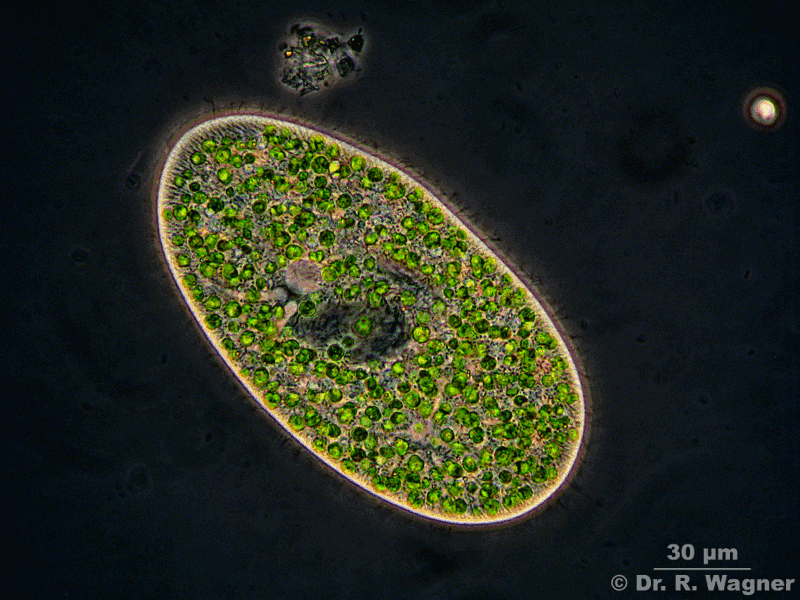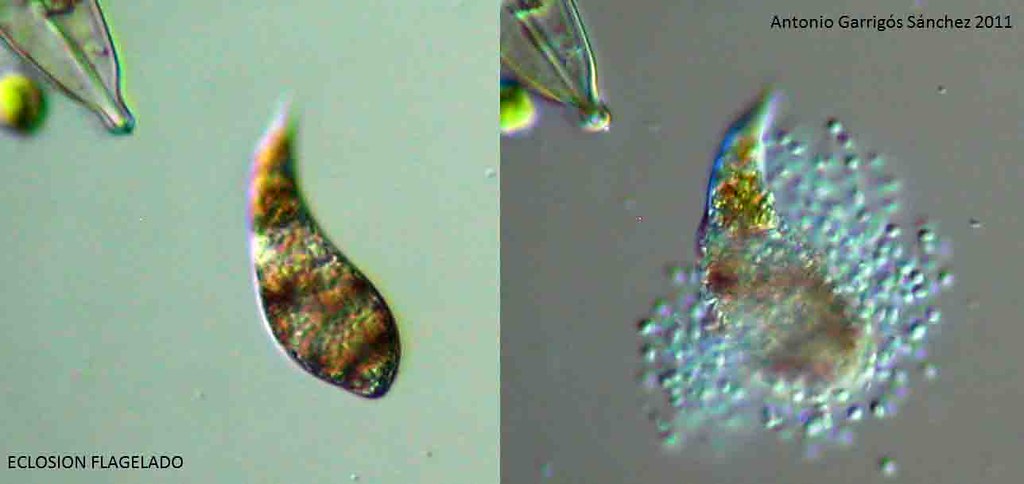I'm just a rank amateur about microbes, but I came across an article about microbe cell walls and certain organelles in the cell dedicated to just keeping the cell wall intact. As conditions deteriorate for the cell, other organelles will shut down in favor of keeping the ones that constantly repair the cell wall, running. When they fail, the wall tears and the animal dies.
I have never run across the problem of the coverslip lowering enough to flatten a cell, since all my slides have been fitted with 4 little dots of nail polish to prevent them from crushing the bugs. One thing I don't have, is a good mental picture of the size of the bugs in relation to everything else, so I find it hard to imagine the coverslip crushing them, although it could happen. I know it does happen with bigger things like copapods. At any rate, the little microbes still explode, even under a raised coverslip.
I didn't know about marine protozoa not having contractile vacuoles either. I live a thousand miles or so inland. I learn something every day here.



